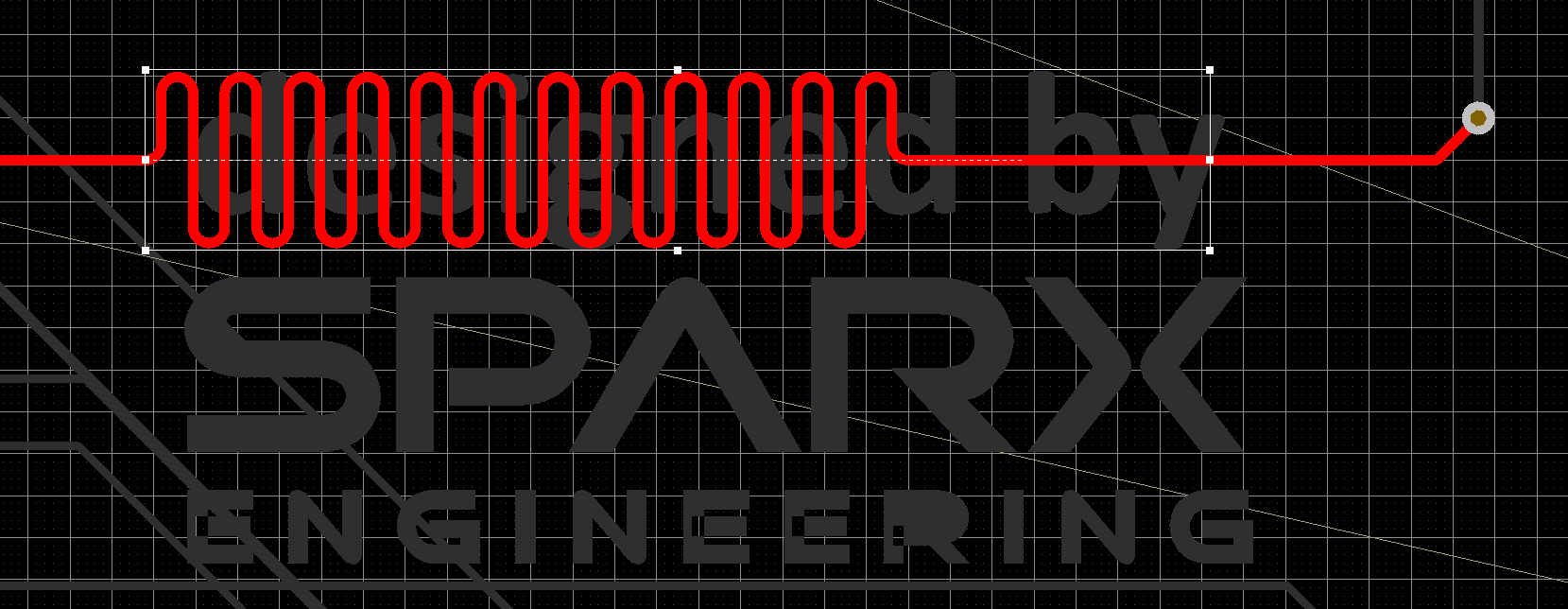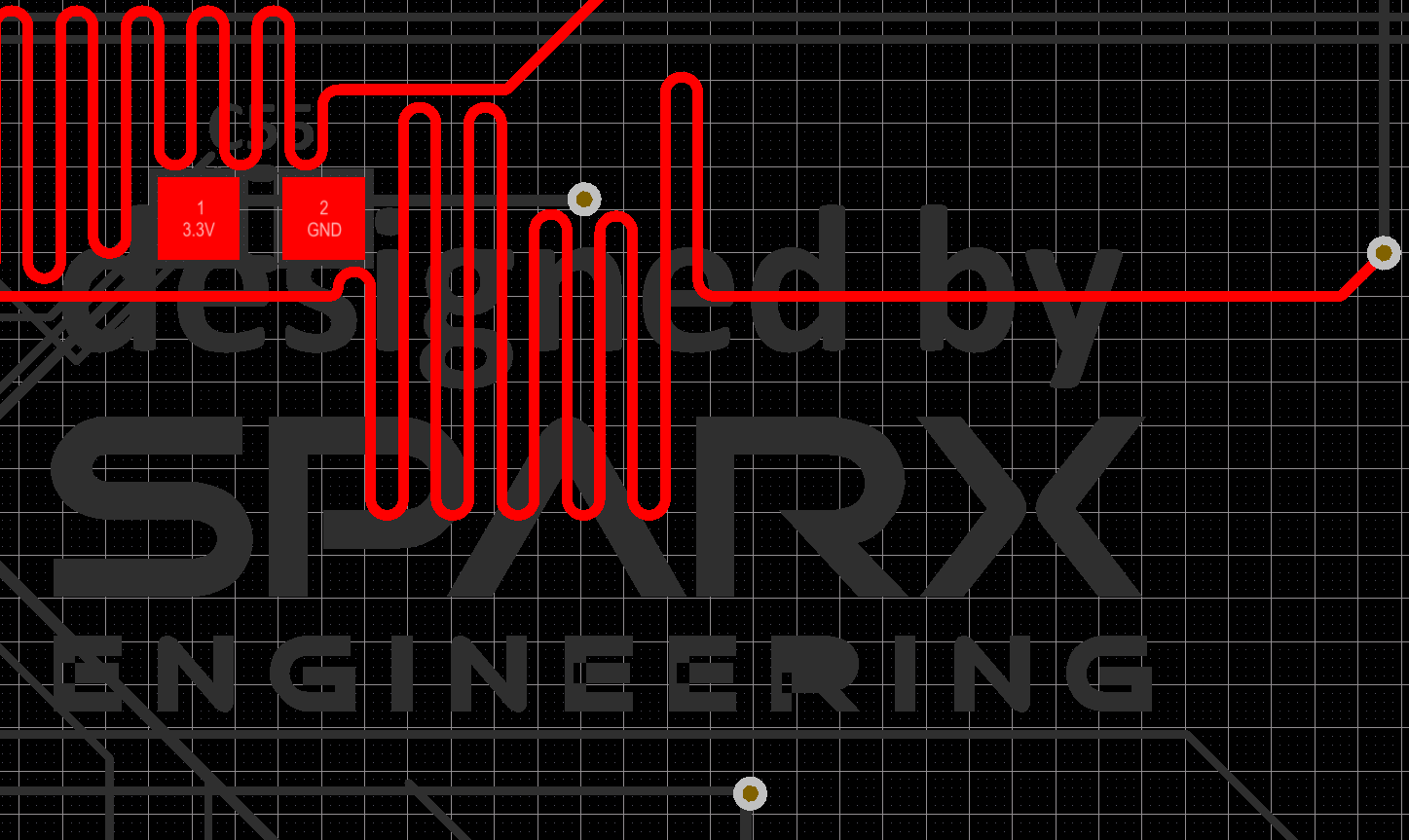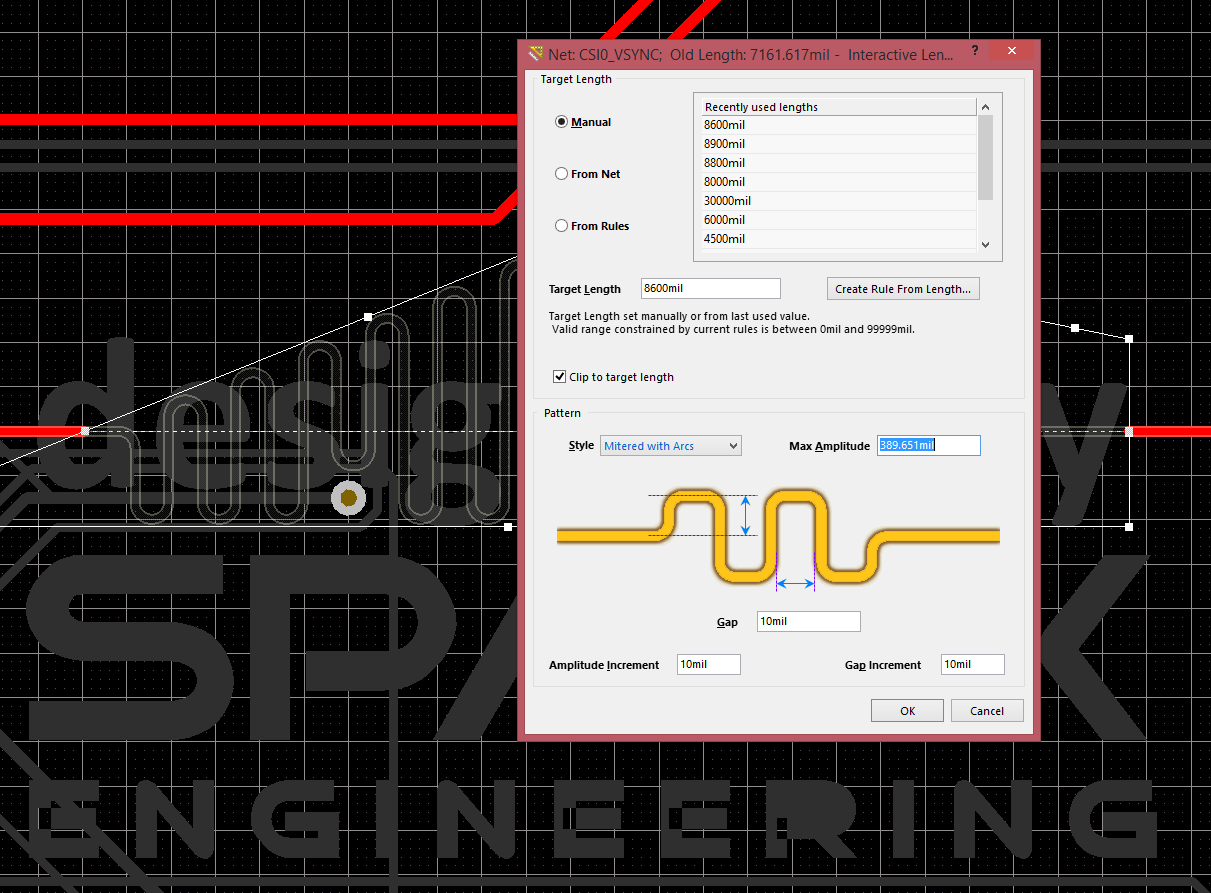High speed signal routing is often the most time-consuming and cumbersome aspect of laying out a pcb. In a handheld device with multiple DDR3 SDRAM chips, FLASH, USB, and more, there may be 100+ signals that need to be carefully tuned in a very confined space.
In previous versions of Altium, length tuning created a serious of individual tracks and arcs. Once the length tuning feature is exited, the tracks could only be manipulated like any other track. To re-length tune, the arcs and tracks would often have to be deleted. What if you needed to add a component or a via within the length tuned area? Delete tracks. Re-tune. Waste time.
Not anymore. In Altium 14.3, the length tuning feature now creates a single entity, aka a smart union, that can be manipulated easily at a later time.
To start, the net is tuned in pretty much the same manner as previous versions of Altium. Go to Tools >> Interactive Length Tuning then click on the desired routed net. When the length tuning feature is active, press TAB to set the desired length or modify other options. While length tuning, the same shortcuts can be used to set the desired shape (1&2 for Miter Radius, 3&4 to change gap size, comma and period to change amplitude).

In just about every pcb layout I’ve ever done, I’ve had to go back and edit the serpentine routing to drop in a component or via. This is where Altium has made significant improvements. Click on the route to select it, then simply drag the outline to move or resize the route.

Reshape the length-tuned area by dragging any of the vertices.

Notice that the newly placed via was avoided. If you drag or reshape the length-tuned route over an occupied area, the route will automatically shape around those objects.

Need to change the target length or other shaping features? Just double-click on the serpentine route and edit the field and click OK. Altium will alter the route.
A couple of times, the length-tune smart union seems to have “crashed” when I tried to drag it across areas where it could not fit a route. After Altium rejected this attempted move, it would not allow me to move or change the shape to legitimate places, basically locking the route. The solution I’ve found was to double-click to open the option box and change the Max Amplitude, as this value is automatically changed as the route is moved and reshaped. If this does not work, delete the smart union and restart the length-tuning process.
At first glance, this new feature seems like it could be a huge time saver on complex, high-speed pcbs.
For more details, visit Altium’s page on Length Tuning Enhancements.
